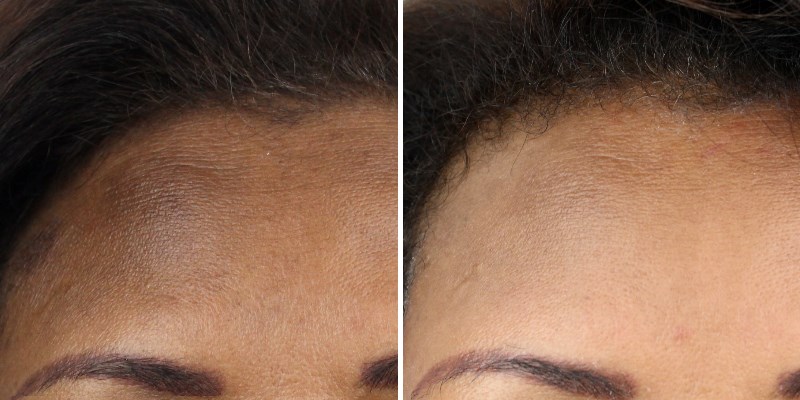Melasma/Post-Inflammatory Pigmentation
Common causes of patchy pigmentation on the face are post-inflammatory pigmentation and melasma.
These conditions are characterised by tan, patchy brown or blueish-grayish discolouration due to pigment overproduction on the skin.
Melasma is primary caused by too much sun exposure and hormonal changes related to progesterone and estrogen. The dark patches have a tendency to crop up on the cheekbones, jaw and nose, particularly when women are expecting.
Similarly, post-inflammatory pigmentation is triggered by some inflammation, but the resulting pigmentation problem can last indefinitely.
How does pigmentation treatment work?
Melasma and post-inflammatory pigmentation can be treated through a variety of topical creams which must be prescribed by a professional dermatologist. In addition, certain skin lighteners combined with corticosteroids can also alleviate the condition.
In some cases, topical medications may not be enough – clinical procedures like microdermabrasion, dermabrasion and chemical peels can be a very helpful addition to exfoliate the skin’s topmost layers and also stimulate the skin’s own healing responses.
We tend to start with topical medications within a good cosmeceutical skincare regime, which should be the foundation of regular at-home skincare. Clinical procedures, on the other hand, will almost always guarantee faster results.
What does pigmentation treatment improve?
By combining certain clinical treatments with corticosteroids and topical creams and/or treatments at our clinic, the patchy discolouration can be drastically improved.
The right combination of treatments can make the darker areas of skin significantly lighter and in general, promote a more even in skin tone and texture.
“Melasma or post-inflammatory pigmentation may not be entirely preventable or completely curable even with the best skincare products and precautions.
“However, where I’ve treated women of colour, a combination of certain clinical procedures plus efforts on the patient’s part with the right skincare can create a visible difference.”
Before & After Photos

Key Facts
Price
Melasma treatments start from £110.
Treatment time
Treatments can be completed in as little as 30 minutes.
Downtime
Day-to-day activities can normally be resumed within a few hours, although this does depend on the treatment/combination chosen.
Aftercare
Aftercare is very important to avoid a recurrence of the pigmentation problem:
- Always use an SPF30 or higher sunscreen before stepping out
- Wear a broad-brimmed hat to protect vulnerable parts around the face. Stay in the shade whenever outdoors
- Use mild skincare products and soap that don’t burn or sting the skin
